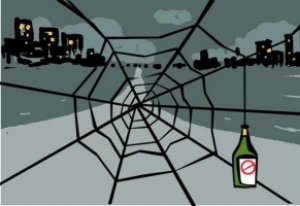THE HINDU EDITORIAL 30-05- 2017
Want to Become a Bank, Central / State Govt Officer in 2020?
Join the Most awarded Coaching Institute & Get your Dream Job


Now Prepare for Bank, SSC Exams from Home. Join Online Coure @ lowest fee
Lifetime validity Bank Exam Coaching | Bank PO / Clerk Coaching | Bank SO Exam Coaching | All-in-One SSC Exam Coaching | RRB Railway Exam Coaching | TNPSC Exam Coaching | KPSC Exam Coaching
THE HINDU EDITORIAL 30-05- 2017
a) Marks and standards
The use of moderation by the Central Board of Secondary Education while finalising Class 12 marks under a Delhi High Court directive poses the immediate question of how various State boards of education that have not adopted the practice will respond. It also points to the long-standing challenge of achieving comparability while assessing students for undergraduate studies from different systems. Some boards have already published the results without moderation, while others will resort to the practice, making it necessary for college authorities to make offsets while fixing admission criteria. Another substantive concern is the pattern of testing procedures placing high importance on a single external examination, without an assurance to all students that the same tasks are being assessed on the same standards. Across-the-board use of tools such as moderation also raises questions on the actual scores. It is extraordinary that tests for non-quantitative subjects such as English and Political Science yield perfect scores of 100% in the CBSE examination and elsewhere, giving the impression that the questions require to be answered only within a limited framework laid out in a textbook, leaving little scope for creative responses that reflect the quality of teaching in the classroom. Moderation of marks under the CBSE policy has been followed partly to offset the ambiguity of questions and any errors, and to achieve parity in the evaluation process and the annual pass percentage. The Central Board recently decided to do away with the practice, in consultation with State boards, and sought the assistance of the Human Resource Development Ministry to make a complete shift. This is something the Ministry should take up on priority, since a consensus among the States would eliminate litigation on grounds of uneven competition — which is what invited judicial intervention on the issue of moderation this year. It is also relevant to point out that the emphasis on a single external examination has heavily influenced the learning process, tailoring it almost entirely to score marks. Built on a foundation of weak primary education, it does little to improve outcomes for the majority of students at the secondary school level. The Annual Status of Education Report, 2016 found, for instance, that among rural students in Class 8, only 43.3% could correctly solve a simple three-digit by one-digit division problem. What this makes clear is that encouraging performance on enrolment of students even in some of the backward States is not the same as achieving high outcomes in actual learning. There is also the issue of access to private tuitions for a better examination score, which affects less-privileged students. It is against the depressing backdrop of such distortions that India’s school system must prepare an evaluation mechanism for students. Reform should recognise the role of the teacher in ensuring genuine learning and encouraging creativity. An external test that evaluates sound learning is the answer, although the challenge is not to stile educational innovation that individual State boards are capable of.
b) Shocking cover-up
The surveillance system put in place by the Health Ministry succeeded in identifying three adults infected with the Zika virus between November 2016 and February 2017 in Gujarat. But the Ministry acted less than responsibly by withholding the information from everyone. Even the World Health Organisation was informed about the three cases as recently as May 15, more than five months after the first case was laboratory-confirmed. Information regarding the cases came to light when the WHO posted the information on its website on May 26. By not disclosing the information in real time, India behaved as China did in the case of the severe acute respiratory syndrome (SARS) outbreak in 2003. China was then widely criticised by the global community for trying to cover up the outbreak — by doing so, the Chinese government was arguably partly responsible for SARS spreading to other countries. That none of the three Zika-infected adults or their spouses or relatives had travelled to any country with Zika virus transmission indicates that the virus was transmitted within India. Based on the local circulation of the virus, the WHO has warned that “new cases may occur in the future”, particularly as the Aedes aegypti mosquito that transmits the virus is widely found in India. Over 34,000 human samples and nearly 13,000 mosquito samples were tested for the presence of the Zika virus, and there was monitoring for cases of microcephaly, a birth defect that has been connected to the mother being Zika-infected while pregnant. But it is not clear whether the person who brought the infection into the country (the index case) has been identified. While the bite of an infected A. aegypti is the main route of Zika virus transmission, it can also be sexually transmitted from an infected man. As the virus remains present in the semen for a long time, the WHO recommends that couples abstain from sex for at least six months after the onset of symptoms. Secrecy about Zika outbreaks, even if seen only in isolated cases, can lead to a public health disaster. Given that local transmission is already present, the A. aegypti is commonly found, and many infected people exhibit no or only mild, non-specific symptoms, up-to-date health bulletins and advisories are vital. India has the responsibility to keep the WHO and the global community informed, especially in the case of dreaded infectious diseases, for both global risk assessment and risk preparedness. The government machinery should have been on overdrive to educate and increase awareness about ways to avoid infection; the decision to keep the information under wraps to avoid creating “panic” is totally unconvincing.
WORDS/ VOCABULARY
1) Ambiguity
Meaning: The fact of something having more than one possible meaning and therefore possibly causing confusion.
Example: We wish to remove any ambiguity concerning our demands.
There are some ambiguities in the legislation.
Synonyms: Obscurity, Uncertainty
Antonyms: Lucidity, perspicuity
2) Consensus
Meaning: A generally accepted opinion or decision among a group of people.
Example: The general consensus in the office is that he can’t do his job.
Synonyms: Agreement, Accord
Antonyms: Argument, Dissension
3) Litigation
Meaning: The process of taking a case to a court of law so that a judgment can be made.
Example: The company has consistently denied responsibility, but it agreed to the settlement to avoid the expense of lengthy litigation.
Synonyms: Legal, Indict
Antonyms: Gorge, Hole
4) Intervention
Meaning: Interference by a state in another’s affairs.
Example: The government was reported to be considering military intervention.
Synonyms: Interference, Intrusion
Antonyms: Challenge, Indignation
5) Distortions
Meaning: The action of giving a misleading account or impression.
Example: The virus causes distortion of the leaves.
Synonyms: Aberrations, deformity
Antonyms: Accuracies, Corrections
6) Stile
Meaning: An arrangement of steps that allows people but not animals to climb over a fence or wall.
Example: Keep to the right of a small brook and climb steps to reach a stile at the top end of the woodland.
Synonyms: Alley, Pathway
7) Acute
Meaning: If a bad situation is acute, it causes severe problems or damage.
Example: The problem of poverty is particularly acute in rural areas.
Synonyms: Heavy, Severely
Antonyms: Obtuse, Dense
8) Bulletins
Meaning: A short official statement or broadcast summary of news.
Example: For a quick short bulletin, you really have to start with summaries.
Synonyms: Notices, Reports.
9) Vital
Meaning: Necessary for the success or continued existence of something; extremely important.
Example: She had found out some information of vital importance.
Synonyms: Essential, Important.
Antonyms: Lethargic, Sluggish.
10) Wraps
Meaning: To cover or surround something with paper, cloth, or other material.
Example: She wrapped the present and tied it with ribbon.
Synonyms: Coats, Envelops.
Antonyms: Uncovers, Exposes.
11) Panic
Meaning: A sudden strong feeling of fear that prevents reasonable thought and action.
Example: Panic spread through the crowd as the bullets started to fly.
Synonyms: Scare, Dismay.
Antonyms: Security, Bravery.




